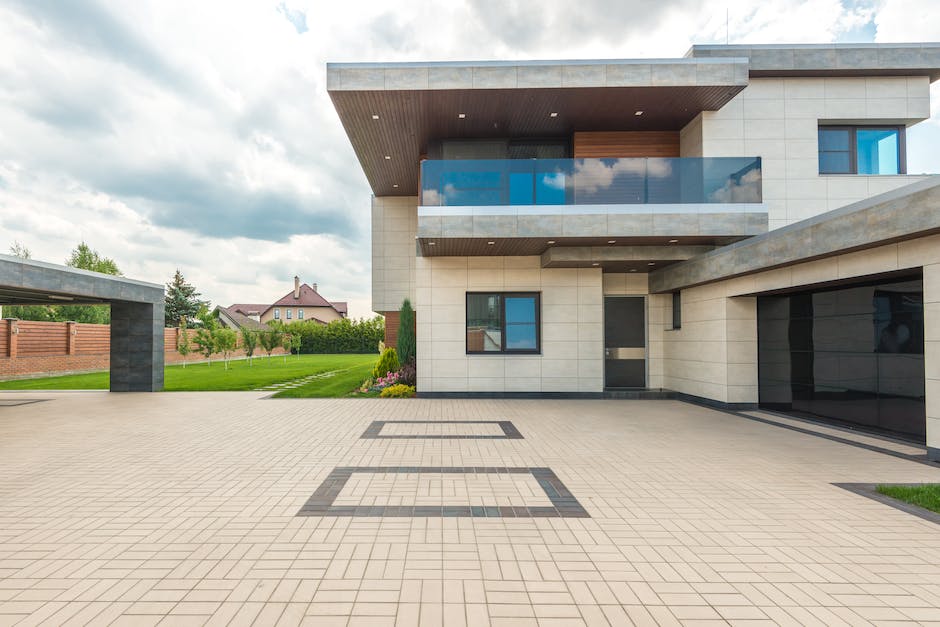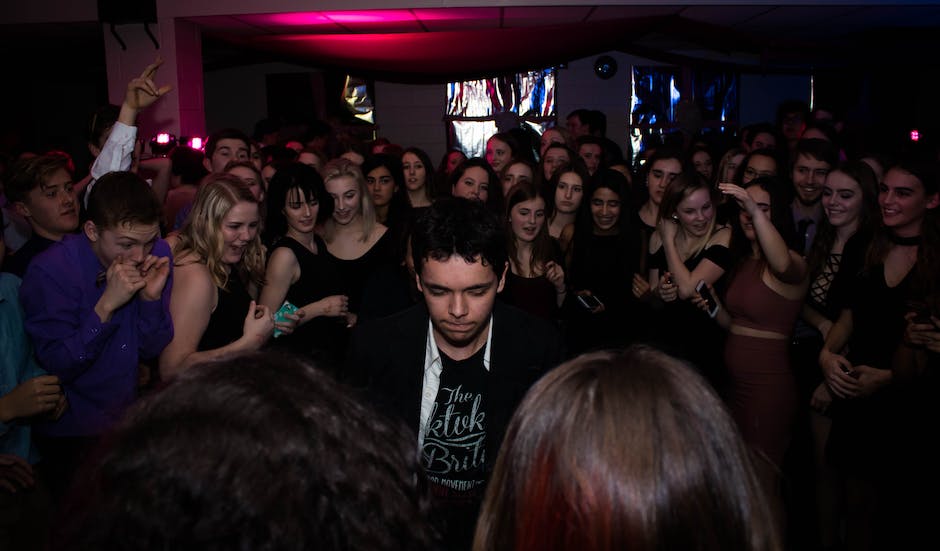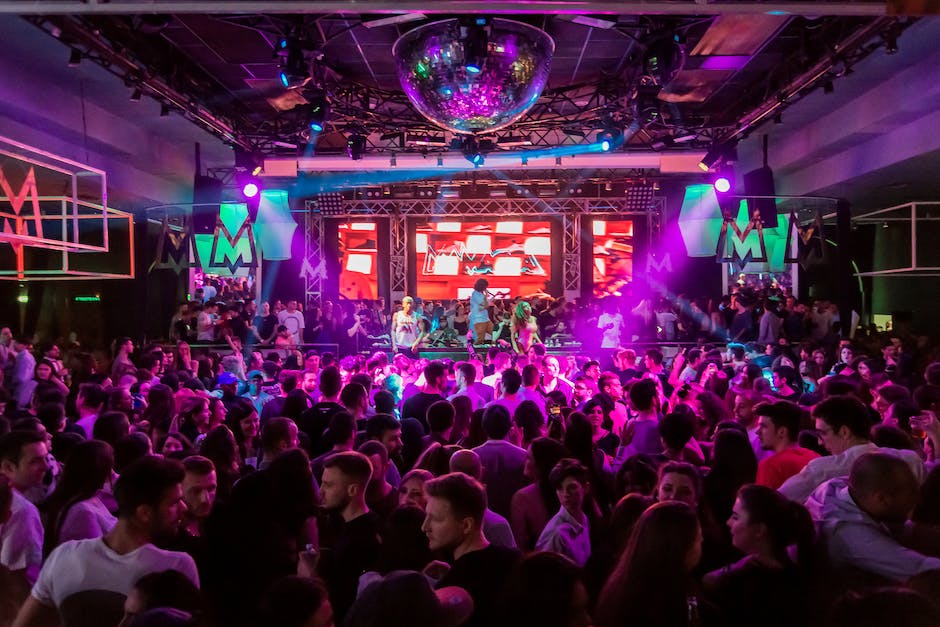From the pulsating beats radiating into the quiet Chicago night from underground clubs in the ’80s, to the throbbing rhythm that permeates mainstream culture and global music festivals today, house music has embarked on an intriguing odyssey. Born on the vibrant scenes of Chicago, house music has since flowed and adapted with the times, not just as a genre, but as a cultural movement that espouses principles of freedom, unity, and liberation. Together, we’ll delve into the secret language of house music in its many forms, including deep house, acid house, tech house, among others, and the socio-cultural and technological melodies that have directed its course over the decades.
The Odyssey of House Music from Chicago
Humans, it seems, have an intrinsic desire for rhythm, a heart drum, an inner foot-tap that aligns with the pulse of existence itself. The power of music to connect, heal, and uplift people is uncontestable, varying from person to person, culture to culture, and time to time. And just as there are innumerable distinct individuals and diverse cultures, so too are there a myriad of musical genres, each providing unique lenses through which to perceive and traverse life’s peaks and valleys. One such genre existing within this broad, imaginative sonic spectrum, is house music – a soul-soothing blend of electronic beats that originated in the vibrant, pulsating heart of 1980s Chicago.
Dance music aficionados recognize the name Frankie Knuckles as being synonymous with the birth of house music. Knuckles, a disc jockey, producer, and remixer, presented his innovative, electronic, soul-inspired beats at Chicago’s Warehouse Club. The music was so unparalleled, so intoxicating, that it quickly garnered a dedicated following; people would flock to ‘hear house music’ – referring to the evolving genre and the physical location where it was presented.
House music’s primal inception came from a desire to blend repetitive beats with elements of soul, funk, and disco. Rather than the several discrete layers present in disco music, house music focused on creating a melded, continuous rhythm that pulsed with energy and fed the dance floors all night long. The modified Roland TB-303 bass synthesizers, sequencers, and drum machines became the war paint of house music artists, allowing them to infuse soulful vocals with relentless percussion and buoyant basslines.
Chicago’s very own Trax Records and DJ International were pivotal in spreading the house music’s electrifying vibe beyond the city, promoting local artists like Marshall Jefferson, Larry Heard (aka Mr. Fingers), and Steve “Silk” Hurley. Their records possessed an infectious energy, giving people a liberating, almost spiritual experience that was far removed from the monotony of daily life.
As the genre grew, it morphed and shimmered into different forms, colors, and flavors. Acid house branched from the original genre in the late 80s, characterized by its trippy, resonant basslines. The movement even played an instrumental role in the second Summer of Love in the UK, highlighting the genre’s trailblazing capacity to influence socio-cultural movements.
Deep house, a form known for mellow vibes and complex melodies, hypnotized music lovers with a unique blend of Jazz-fusion in the mix. Progressive house catapulted the genre into mainstream consciousness with its epic, borderline orchestral compositions enticing a wider audience than ever before.
Alternatively, tech-house combined the soulful elements of house with the mechanized rhythms of techno, creating a crisp yet moody sound palette. Each of these sub-genres added new, intricate nuances to the heritage of house, demonstrating the genre’s versatility and adaptability.
House music, much like a magnificent river, has continuously flowed, and overflowed, shaping, and being shaped by its surroundings. Starting as a genre that redefined the dance scene in Chicago, it has traversed continents, and seeped into various cultures, evolving with every beat and bar. The genre now stands as an umbrella, cradling a multitude of sub-genres under its wing, each echoing the essential spirit of house music—that of soulful rhythms, communal dancing, and transcendent joy.
The legacy of house music perpetuates soaring across time. The footprints of its formative artists act as blueprints for new generations of artists creating new rhythmic landscapes. It’s a living testament to how a cultural sonic revolution rooted in the throbbing heart of the Windy City can ripple outwards, changing the face of music forever, one beat at a time. And though the original Warehouse is no longer standing, the house it built remains, expanding its rooms with every echoing kick-drum and melodic refrain.

The Secret Language of House Music
As house music began carving its niche during the 1980s, it unleashed an eclectic mix of repetitious rhythms and engaging disco beats. As we’ve traveled through earlier topics, we’ve found house music’s roots in the soil of Chicago. But what makes house music truly distinctive are its sonic elements, sub-genres, and the plethora of musical influences that have shaped its journey.
To begin unraveling this narrative, let’s dive into the welcoming arms of Garage House– a child of house music that cozied right up to disco, with a warmer and melodic approach. Birthed within the iconic Paradise Garage in New York, this sub-genre is the offspring of a passionate love affair between complex symphonic structures and impassioned vocals, graced by the likes of Larry Levan’s expertise.
Then, there’s Afro house. This style introduces an element of world music that underlines the diversity within house by incorporating African sounds, percussion patterns and instruments. It directly mirrors the influential practices from the Mother Continent to form a coherent, adrenaline-charged pulse that is refreshingly exuberant.
Deviating from a traditional scope, Electro House marries bulky synthesizers with chunky, heavy basslines. Bursting onto the scene in the early 2000s, it pushes the boundaries of electronic dance music, translating into energetic live shows, an exhilarating party scene and, notably, the unseen backbone of countless DJs infamous ‘drops’.
A central element of the House narrative remains the inclusion of French touch or French House. Vaguely alluding to disco’s retro vibes, it features more comprehensive production techniques with the millennium’s wholehearted arrival. Heavy reliance on cut-off and phasing techniques, coupled with skillful sampling and looping, transformed the sound of the era entirely- Daft Punk and Stardust stand as testament to this revolutionizing facet of house music.
As we trace house music’s sonic elements through history, one mustn’t overlook the importance of Latin House, diversifying our appreciation of dance genres. Its rhythm-thrusting prowess, melding salsa, samba, and merengue, graces us with the understandable feeling of a scorching Hispanic night, inevitably leading us to move, dance and feel.
The beautiful, raw, Chicago-inspired Ghetto House, or Booty House, further diversifies the soundscape. Stylized by explicit lyrics, exuding a steamy atmosphere, it maintains a simplistic approach toward music composition yet creates an inevitable groove that is hard to resist.
As for influences, house music is indebted to the powerhouses of jazz, blues, synth-pop, and even reggae. It has morphed, pulsated, and breathed the refreshing influences of a multitude of genres, reshaping the paradigms of dance music and establishing house music as a significant force in today’s pulsating cultural rhythm. The evolution of house music is a testament to the creative and adaptive agility musical artists bring to bare.
Genres adapt, hybridize, and expand as they canvas our global music landscape. Trends transform and mutate, but house music remains an immovable bastion in the realm of dance music. From the pulsating heart of Chicago to the vibrant dance floors across the world, house music’s distinctive sonic elements, its vast array of sub-genres, and extensive influential components make it a treasured artifact of our shared human experience.

The Cultural Impact of House Music
House music, an emblem of human-connectedness and a shared universal language, has truly permeated every facet of cultural and societal norms. One pivotal way house music has made its mark is through its vivid embrace of multicultural influences – a testament to its harmonious entwinement with divergent expressions of individuality and culture. Indeed, it is through house music that society has come to appreciate the rhythm of life in other parts of the world, transcending borders and dissolving the barriers of language.
Think of Garage House, a sub-genre of house, with its unique blend of soulful melodies and heavy kick drums, has wholly adjusted our collective definition of what house music can be. Born in New York’s Paradise Garage club, Garage House has a profound impact on the music scene, highlighting not just the transformative nature of music, but its propensity to reflect societal changes.
Equally, Afro house exposes listeners to the vibrant and distinctive flavors of African sounds and percussion patterns. In intertwining contemporary electronic music with African beats, Afro house introduces exotic cadences to audiences worldwide. In this way, it soothes a vital connection, fostering global unity and cultural appreciation, proving that music can indeed shrink the world.
Delving into Electro House, this hard-hitting genre uses synthesizers and heavy basslines to create a full-bodied sound characterized by its high-intensity and pulsating energy. Undoubtedly, the global love for Electro House has altered the way society views electronic music – depicting it as a channel for euphoric experiences and community bonding rather than mere noise.
The emergence of French Touch, endearingly referred to as French House, reflects the potent blend of retro vibes and modern production techniques. Infamous for its disco-infused melodies stylized with dreamy effects, it pays homage to the roots of house music while interjecting a layer of artistic creativity, nudging societal norms towards a renewed appreciation for the past within the context of present-day music.
Latin House, with its fusion of salsa, samba, and merengue rhythms, showcases the lively Hispanic heritage – singing volumes about the power of music to echo cultural identities and societal values. This sub-genre has deeply influenced societal norms, ushering us into a sphere of inclusivity and diversity where different cultures aren’t just normalized but celebrated.
Ghetto House or Booty House – with its visibility of explicit lyrics and minimalist approach, signifies the raw, unadulterated part of society. Its roots in the urban working class of Chicago humanize the genre, emphasizing the power of music to verbalize even the grittiest elements of societal discourse.
Finally, house music’s malleability in embracing influences from jazz, blues, synth-pop, and reggae is a testament to its evolution and adaptability. It takes a genre with rich historical roots and infuses it with the modernized elements of synthetic beats and technologically advanced productions.
In conclusion, house music is a powerful force shaping societal norms – it acknowledges our collective differences while enabling their harmonization into a cohesive musical tapestry. House music is not only a genre, it is our global anthem for unity and acceptance, continually reminding us that despite our varied cultural backgrounds, we all march to the same rhythmic beat: the beat of humanity’s shared love affair with music.

The Global Reach of House Music
The fabric of house music stretches far and wide, seeping into the seams of numerous cultures and countries. The unique articulation of Garage House, originating from New York, introduced an introspective element to the genre, providing a slower pace, a more spiritual influence, and a more melodic structure to the genre. Its transformative energy provided a reflective canvas for listeners, creating a tactile connection between the music and its audience.
The colorful African rhythms also found a beat in house music through sub-genre Afro house. This style intricately weaves traditional African percussion patterns and sounds within the staple fast-paced, four-on-the-floor rhythms of house music, creating a dynamic and exotic rhythmic journey. Moreover, it signifies the beauty of house music in its ability to culture blend, an inherent testament to house’s global impact.
There’s no mistaking the electrifying, pulsating energy of Electro House. Characterized by its prominent basslines and heavy use of synthesizers, this sub-genre pushes the boundaries, reflecting the auditory evolution of our digital age. Its high-intensity beats and melodic structures tap into the ephemeral energy of the dance floor crowd, making it a prevalent sub-genre at many modern music festivals.
Meanwhile, across the Atlantic, the French laid their distinctive touch on house music. French Touch or French House, popularized in the late ’90s, reintroduced house music audiences to retro vibes combined with the sophistication of modern production techniques. By sampling funk and disco tracks, often corrupted with synthetic and mesmerizing filters, French Touch managed to reintroduce an era while simultaneously making it their own.
Similarly, Latin House also celebrates cultural fusion by merging salsa, samba, and merengue rhythms with the recognizable pulsating four-on-the-floor beat. By spinning Latin influences into the mix, an exotic and energetic dance-centric sub-genre was born, making house music an audacious cultural melting pot.
Then there are the raw, unapologetic beats of Ghetto House or Booty House. This sub-genre, with its fast bpm and explicit lyrics, delivers an audacious, simplistic approach to house music. Its stripped-down versions remove any gloss, focusing on delivering powerful, direct, and repetitive beats that hits hard to the core of suburban dance floors.
Last, yet far from least, the influences of jazz, blues, synth-pop, and reggae found a home in house music, bolstering the genre’s notoriety in its malleability. Such diverse influences underline the fact that house music isn’t just a style; it’s a movement that continually absorbs, transforms, and reflects the world’s musical environment into danceable anthems.
House music is a sonic emblem of human interconnectedness, a shared universal language that breaks down geographical and cultural boundaries. Its versatility, adaptability, and chameleonic character allow it to seamlessly blend disparate musical elements into cohesive, hypnotic rhythms. It’s a genre that acknowledges the power of beats in shaping societal norms, from the dance floor to mainstream media.
House music not only shapes the soundtrack to our lives but also the cultures we inhabit, embodying the rhythm of our diverse global sociocultural fabric. It’s this very diversity that has allowed house music to transcend its Chicago roots, evolving into a global phenomenon that unites us under the common language of rhythm, dance, and love for music. House music has, and will continue to be, a prominent testament to the universal language that music bestows, connecting us as one global dance floor. In its beats, we find unity; in its rhythm, we find connection; in house music, we find home.

The indomitable spirit of house music continues to reverberate, etching a rhythm of freedom and unity in our collective social consciousness. It is more than just a genre birthed from the underground clubs of Chicago; house music is a global phenomenon that disrupted the club scene, boosted mega-festivals, birthed superstar DJs, and continues to influence other music genres. With its roots grounded in Chicago, it has proven to be a transcendent musical force that knows no geographical boundary. As unyielding as the 4/4 beat that defines it, house music continues to evolve and inspire, maintaining its relevance in the ever-changing landscape of music.

Comments.
Currently there are no comments related to this article. You have a special honor to be the first commenter. Thanks!